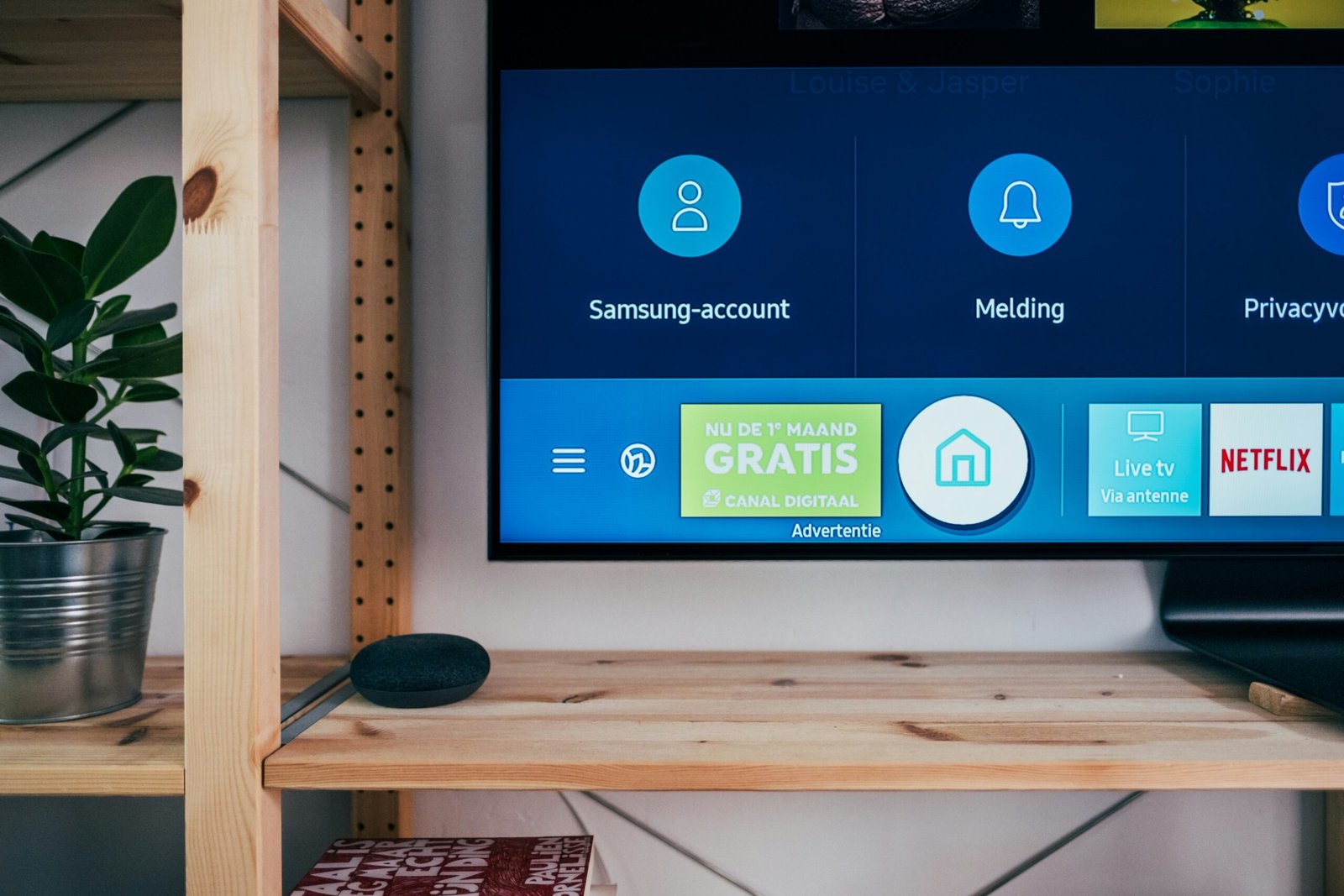When Should Monitors Be Replaced? A Comprehensive Guide
Introduction to Monitor Replacement
Monitors are indispensable assets in today’s digital age, serving as the visual interface for a multitude of tasks ranging from professional work to personal entertainment. Given their critical role, the performance and reliability of monitors significantly influence productivity, the quality of the viewing experience, and overall user satisfaction. High-quality displays facilitate clearer, more vibrant visuals that can enhance both the accuracy and efficiency of tasks performed on them, be it graphic design, data analysis, or even casual browsing and gaming.
For professionals, particularly those in fields relying heavily on visual cues such as photo and video editing, architectural design, or financial modeling, the caliber of their monitor directly correlates with the precision of their output. A subpar or aging monitor can lead to inadequate color representation, suboptimal resolution, and slower response times, which can degrade the quality of finished work and strain the eyes, reducing overall productivity.
On a personal level, the impact of monitor performance extends to entertainment and leisure activities. Gaming, streaming movies, and engaging in creative hobbies are all significantly enhanced by a high-performing display. Modern monitors with higher refresh rates, better color accuracy, and various advanced features offer an immersive experience that older or lower-quality monitors cannot match.
Considering these factors, understanding when and why to replace a monitor becomes crucial. Aging displays not only compromise visual quality but also introduce risks such as increased eye strain and potential downtime due to malfunctions. As technology advances, newer monitors incorporate features that alleviate these drawbacks, enhance user comfort, and support emerging digital demands. Therefore, regularly evaluating and updating one’s monitor in alignment with evolving needs ensures sustained performance and long-term satisfaction.
Signs Your Monitor Needs Replacement
Monitors are essential tools in our daily digital endeavors, from professional tasks to recreational activities. However, like all electronic devices, they exhibit signs indicating when they need to be replaced. Observing these signs early can help you avoid productivity lags and enhance your overall user experience.
One of the telltale signs that your monitor may need replacement is display flickering. This issue can stem from internal hardware failures, outdated drivers, or even issues with the power supply. A flickering screen not only affects visibility but can also cause eye strain, headaches, and fatigue if used for extended periods.
Dead pixels are another clear indicator. These are pixels on the display that remain unlit and appear as black spots or white dots. While a small number of dead pixels can be tolerable, their proliferation greatly diminishes the quality of the visual output, disrupting your viewing pleasure and making it harder to discern finer details.
Next, watch out for color distortion. This can present as inaccurate color rendering or inconsistent hues across the screen. Typically, this suggests aging display technologies or damage to the display panel. If you rely on your monitor for activities needing precise color accuracy, such as graphic design or photo editing, color distortion can severely impede your work.
Additionally, a slow response time can signal the decline of your monitor’s performance. Response time refers to how quickly a monitor can change pixel colors from one frame to another. A sluggish response time can result in motion blur, which hampers experiences that require fast-paced screen updates, such as gaming or video playback.
Lastly, any physical damage like cracks, permanent lines, or damage to the screen’s surface usually necessitates immediate replacement. Physical damage not only affects the usability but can also pose safety risks, including electrical hazards.
Investing in a new monitor when you observe these signs ensures that you maintain high standards of visual performance and user comfort, catering to both your professional and personal needs.
Technological Advancements and Obsolescence
Technological advancements have significantly accelerated the rate at which monitors become obsolete. One of the key elements driving this obsolescence is the continuous improvement in display technology. For instance, the shift from Full HD to 4K and even 8K resolutions has set new standards in image clarity and detail. Monitors with higher resolutions offer not only sharper images but also larger screen real estate, which is particularly advantageous for tasks requiring high levels of detail, such as graphic design and video editing.
In addition to resolution upgrades, improvements in color accuracy have made modern monitors indispensable for professionals and enthusiasts alike. Monitors now come with advanced color gamuts like DCI-P3 and sRGB, ensuring that the colors displayed are more vibrant and true to life. For professionals in fields like photography and video production, where color accuracy is crucial, keeping up with these advancements becomes essential.
Higher refresh rates have also revolutionized the user experience, particularly in gaming and professional environments that demand fluid motion. Monitors offering refresh rates of 120Hz, 144Hz, or even up to 240Hz provide a smoother visual experience, reducing motion blur and improving overall performance. These enhancements make older monitors with standard 60Hz refresh rates seem sluggish in comparison, further contributing to their obsolescence.
Connectivity options have likewise seen substantial upgrades. Modern monitors often support HDMI 2.1, USB-C, and DisplayPort 1.4, providing greater flexibility and compatibility with a variety of devices. HDMI 2.1, for example, supports higher bandwidth, enabling 4K resolution at 120Hz or 8K at 60Hz. USB-C connectors offer the convenience of single-cable connections for power, data, and video, simplifying setups and reducing cable clutter.
Whether for improved visual quality, enhanced performance, or greater flexibility, these technological advancements significantly elevate the user experience. Consequently, they contribute to the obsolescence of older monitor models that cannot support these latest features, making the consideration of an upgrade an important decision based on individual needs and usage patterns.
Evaluating Your Needs and Usage Patterns
When deciding whether it’s time to replace your monitor, it’s crucial to evaluate your needs and usage patterns against the capacities of your current setup. The requirements can vary significantly based on your primary uses such as gaming, professional graphic design, programming, or general day-to-day use. By methodically assessing these factors, you can determine if your current monitor is adequate or if an upgrade is warranted to enhance your productivity and satisfaction.
For gamers, the monitor’s refresh rate and response time are paramount. High-refresh-rate monitors, at least 120Hz or higher, combined with low response times, facilitate smooth gameplay and reduce motion blur, which is particularly beneficial for fast-paced games. Additionally, considering features like Nvidia G-Sync or AMD FreeSync can further enhance the gaming experience by eliminating screen tearing and stuttering.
In the realm of professional graphic design, color accuracy and resolution are non-negotiable. Monitors that support a wide color gamut and offer high resolutions, such as 4K, are essential for tasks involving photo and video editing, 3D rendering, and other design work. Additionally, some high-end monitors provide factory color calibration, significantly aiding professionals who require precise color representation.
Programmers typically benefit from monitors offering high resolution and large screen size, or alternatively, dual monitor setups that enhance multitasking capabilities. Features such as blue light filters and adjustable stands also contribute to ergonomic comfort, which is vital for those spending long hours in front of their screens.
For general use, considerations hinge more on personal comfort and space constraints. Those using their monitors for tasks such as browsing, watching videos, or working on documents might find that even modest upgrades like monitors with better ergonomic adjustments, higher resolutions, or slightly larger screen sizes can substantially improve usability and comfort.
Ultimately, understanding your specific needs and usage patterns is key to determining whether your current monitor suffices or whether an upgrade could substantially benefit your productivity and overall experience.
Cost-Benefit Analysis of Replacing a Monitor
When considering the replacement of a monitor, a thorough cost-benefit analysis is essential to make an informed decision. Modern monitors often come with advanced features that can significantly enhance performance and productivity. The initial cost of purchasing a new monitor can be seen as an investment. High-resolution displays, faster refresh rates, and ergonomic designs are among the key benefits. These features collectively contribute to a more efficient work environment, potentially reducing the time required to complete tasks.
Improved monitor technology also addresses issues related to eye strain. Many contemporary monitors are equipped with blue light filters and flicker-free technology, which can mitigate the adverse effects of prolonged screen time. This can lead to improved well-being and reduced risk of computer vision syndrome, which is a common problem for those spending extensive hours on screen.
On the other hand, continuing to use an outdated or failing monitor could incur various hidden costs. Older monitors generally consume more power, which can lead to increased electricity bills over time. Further, a monitor nearing the end of its functional life can experience frequent malfunctions, resulting in increased downtime. This can be particularly disruptive in fast-paced work environments where continuity and efficiency are paramount.
Moreover, the reduced performance associated with aging monitors can prompt slower workflow and decreased accuracy. Therefore, the cost of replacing an outdated monitor with a new one should be weighed against these potential disadvantages. While the upfront cost might seem substantial, the long-term benefits, such as enhanced productivity, better health, and lower maintenance costs, often justify the investment.
Environmental and Ethical Considerations
When considering the replacement of a monitor, it is crucial to acknowledge the environmental impact associated with electronic waste (e-waste). Monitors, like all electronic devices, contain materials and components that can be harmful to the environment if not disposed of properly. The accumulation of e-waste in landfills contributes to pollution and can release hazardous substances such as lead, mercury, and cadmium into the soil and water.
Recycling offers a practical solution to mitigate these negative effects. Many programs and facilities are available for responsible e-waste disposal. Recycling not only prevents harmful materials from entering the ecosystem but also allows for the recovery of valuable resources like metals and plastics, which can be repurposed for manufacturing new products. Consumers should prioritize using certified e-waste recyclers who adhere to environmental standards and regulations.
Furthermore, choosing energy-efficient monitors can significantly reduce your environmental footprint. Modern monitors with energy-efficient designs utilize technologies such as LED backlighting and advanced power management features, contributing to lower electricity consumption. Energy Star certified monitors, for example, can decrease energy use by up to 30% compared to conventional models. This reduction in energy consumption not only lessens the environmental impact but also translates into cost savings over time.
However, it is equally important to consider the ethical aspects of replacing a monitor. Opting to extend the life of an existing device through repairs or upgrades can be a valuable approach. This action reduces demand for new products, thereby decreasing the volume of e-waste generated. Additionally, donating functional monitors to schools, non-profits, or community organizations can provide them with valuable resources while keeping usable equipment out of landfills.
Ultimately, the decision to replace a monitor should be informed by a balanced understanding of its environmental and ethical implications. By leveraging recycling options, selecting energy-efficient models, and considering alternative usage pathways, individuals can make more responsible choices that align with sustainable practices.
Expert Opinions and Industry Standards
Industry experts and manufacturers offer varying recommendations on monitor lifespan and replacement timelines. Generally, the typical lifespan of a monitor ranges between three to five years. However, this timeframe can be influenced by several factors, including usage patterns, technological advancements, and the quality of the monitor itself.
Manufacturers like Dell and HP suggest replacing monitors every four to five years to keep up with technological innovations and ensure optimal performance. On the other hand, gaming and high-performance monitors may have a shorter lifespan due to more intensive usage, prompting some experts to recommend replacement every three to four years to maintain peak visual performance.
Professional recommendations underscore the importance of routine maintenance and careful usage. For instance, exposure to excessive brightness, inconsistent power supply, and physical impacts can significantly reduce a monitor’s lifespan. Regular cleaning and using surge protectors are simple measures to extend the life of a monitor.
Technical indicators such as screen flickering, dead pixels, and poor color accuracy are traditional signs that it may be time to consider a replacement. Moreover, if a monitor begins to show compatibility issues with newer software or operating systems, it underscores the need for an upgrade to ensure productivity and efficiency.
Additionally, businesses and organizations often adhere to stricter replacement schedules. They swap monitors more frequently—every three years—primarily to avoid potential downtime and performance issues, ensuring employees have the latest technology to boost productivity.
In conclusion, while industry standards provide a useful guideline, individual needs and the specific context of use largely determine the appropriate time for replacing a monitor. By adhering to both manufacturer recommendations and expert advice, users can maximize the longevity and performance of their monitors.
Conclusion and Final Recommendations
In the rapidly evolving landscape of technology, determining the appropriate time to replace a monitor is a crucial decision. Throughout this guide, we have identified several key indicators of a failing monitor, such as the presence of dead pixels, flickering screens, and color distortions. These signs provide a clear signal that it may be time to consider a new display. Additionally, technological advancements, including higher resolutions, faster refresh rates, and improved energy efficiency, offer compelling reasons to upgrade your current monitor.
Assessing personal needs is another vital aspect. For professional environments, especially in industries like graphic design and video editing, a high-quality, up-to-date monitor is indispensable for achieving optimal results. Gamers, too, benefit greatly from the latest technological features such as low response times and frame synchronization technologies. Conversely, if your primary use encompasses basic tasks like word processing and web browsing, an immediate upgrade might not be as critical.
Moreover, financial and environmental considerations play a significant role in the decision to replace a monitor. On the financial side, weighing the cost of repair versus replacement can help in making an economically sound choice. From an environmental perspective, opting for monitors with eco-friendly certifications or participating in recycling programs can minimize the ecological footprint.
In making an informed decision about when to replace a monitor, it is recommended to balance the indicators of degradation with the potential benefits of technological advancements, aligned with your personal and professional requirements. Financial prudence and environmental responsibility should also guide your decision. By considering these factors comprehensively, you can ensure that your choice maximizes both productivity and sustainability.







